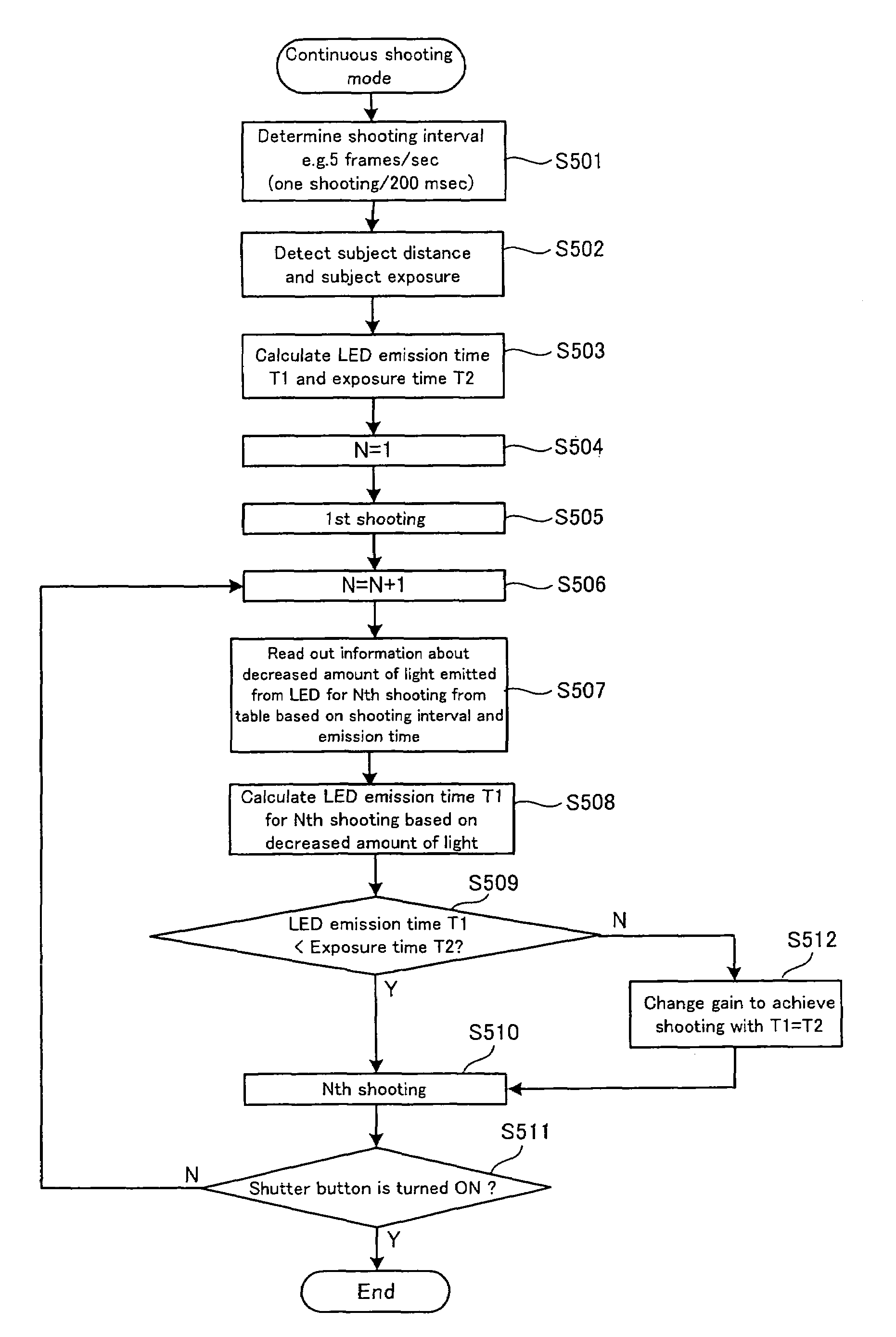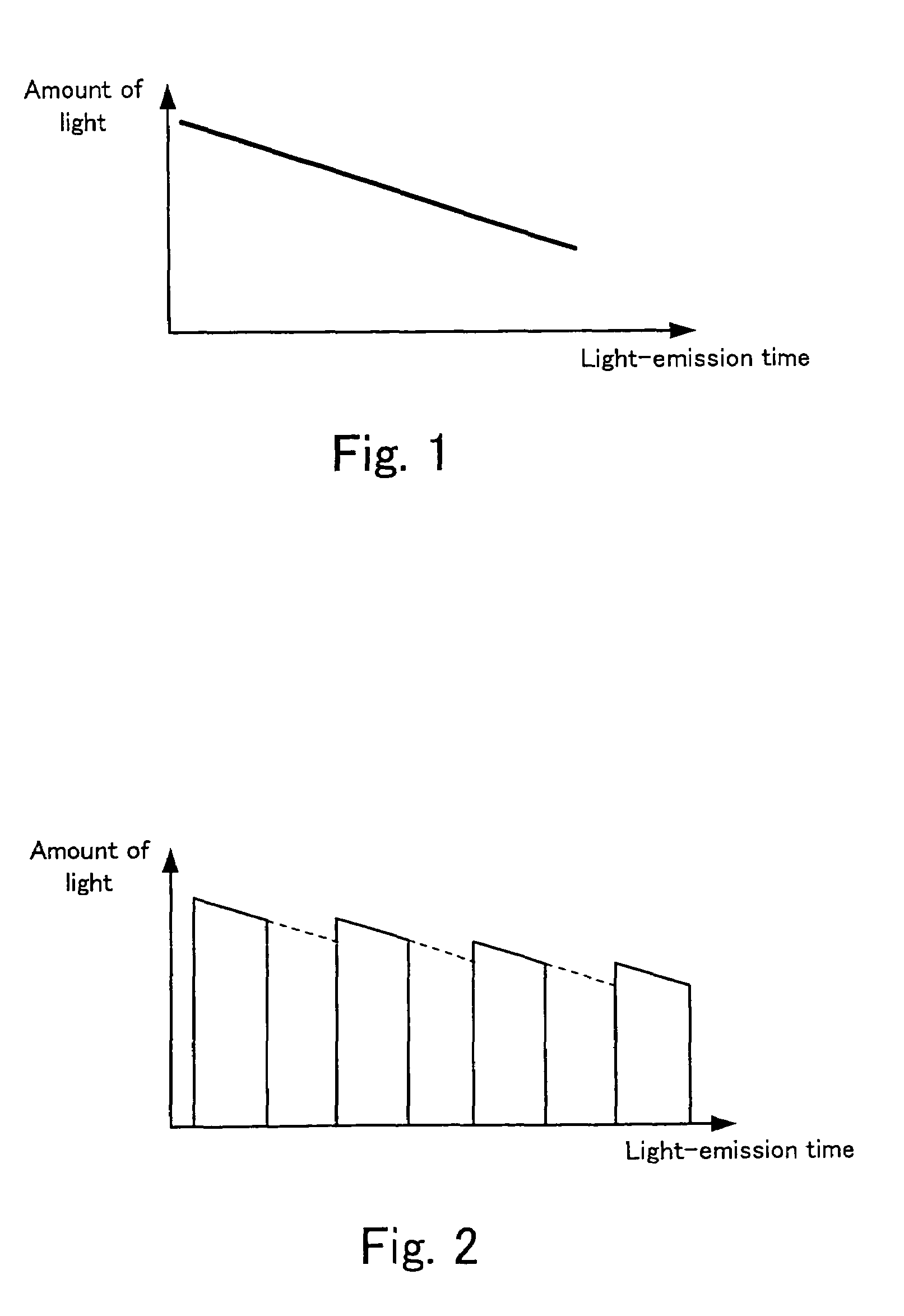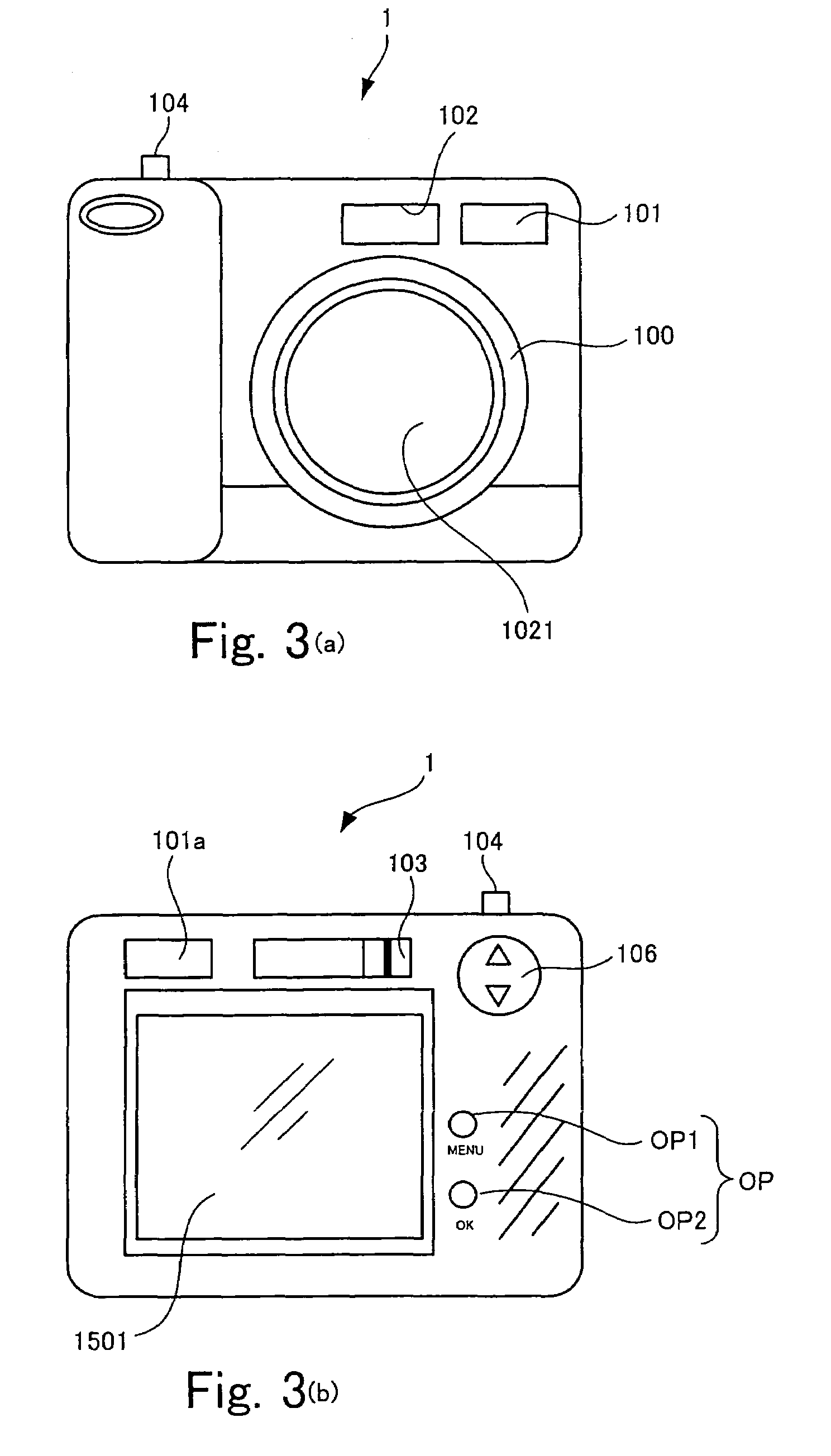Image-taking apparatus
a technology of image-taking apparatus and light source, which is applied in the direction of shutters, instruments, and exposure control, etc., can solve the problems of increasing the number of shootings, the amount of light emitted at one shooting gradually decreases, and the amount of light emitted at each shooting time during continuous shooting gradually decreases, so as to achieve control of the shooting interval and higher precision
- Summary
- Abstract
- Description
- Claims
- Application Information
AI Technical Summary
Benefits of technology
Problems solved by technology
Method used
Image
Examples
Embodiment Construction
[0069]Embodiment(s) of the present invention will be described with reference to the drawings.
[0070]FIGS. 3(a) and 3(b) are external views of a digital camera 1 according to an embodiment of the invention.
[0071]FIGS. 3(a) and 3(b) illustrate the front and the back of the digital camera 1, respectively.
[0072]As shown in FIG. 3(a), the digital camera 1 has a lens barrel 100 on its front face. The barrel 100 has a built-in shooting lens group 1021. In addition, a light-emission window 102 is disposed above the lens barrel 100, and a finder 101 is disposed next to the light-emission window 102. Fill light is emitted through the light-emission window 102 toward a subject, when a system control circuit that will be described later determines that emission of fill light is necessary. Further, a release button 104 is disposed on the top face of the body of the digital camera 1.
[0073]As shown in FIG. 3(b), a display screen 1501 is disposed on the back face of the digital camera 1. Above the ...
PUM
 Login to View More
Login to View More Abstract
Description
Claims
Application Information
 Login to View More
Login to View More - R&D
- Intellectual Property
- Life Sciences
- Materials
- Tech Scout
- Unparalleled Data Quality
- Higher Quality Content
- 60% Fewer Hallucinations
Browse by: Latest US Patents, China's latest patents, Technical Efficacy Thesaurus, Application Domain, Technology Topic, Popular Technical Reports.
© 2025 PatSnap. All rights reserved.Legal|Privacy policy|Modern Slavery Act Transparency Statement|Sitemap|About US| Contact US: help@patsnap.com



